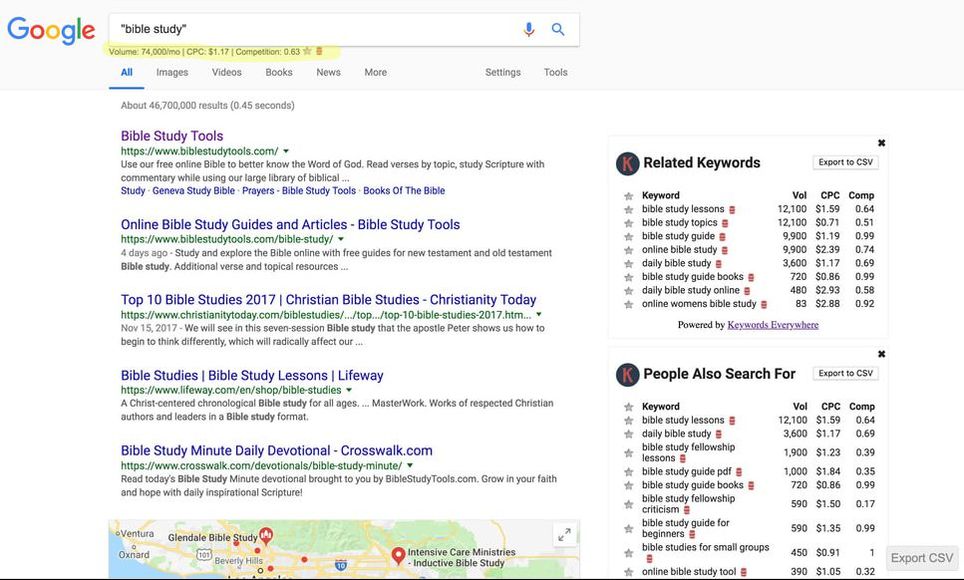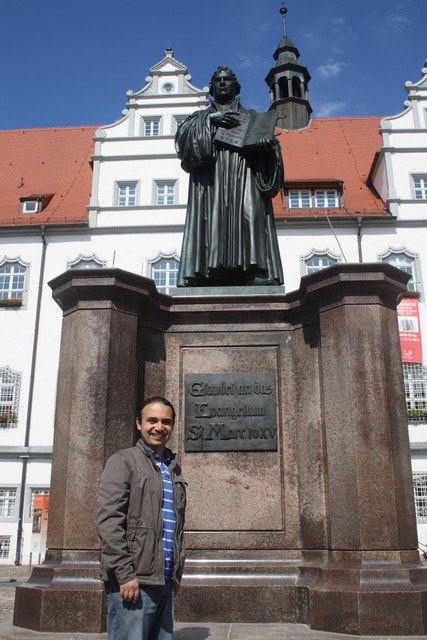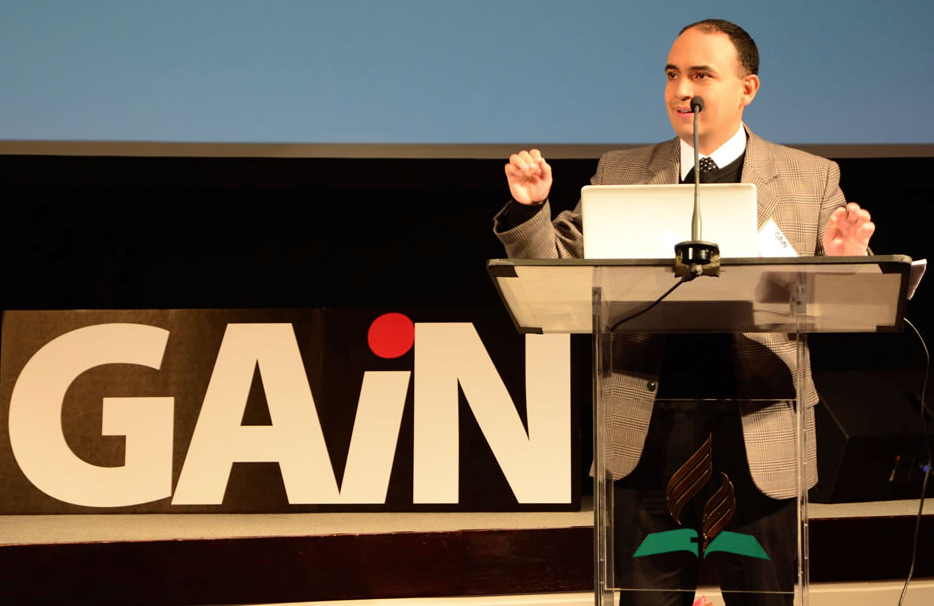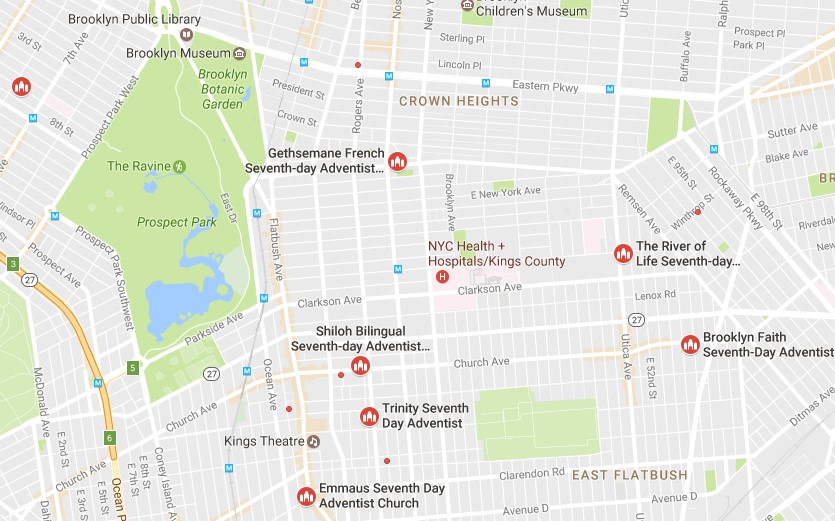Jamie Jean Schneider DommDigital Strategist for the North American Division. Amy PrindleThe Center for Online Evangelism is a missionary project devoted to developing online mission stations. This blog post is part of a SEO series created through a collaborative partnership between the Social Media + Big Data department of the North American Division and the Center for Online Evangelism. Whether you’re a conference, union, church, a school, a regional office, a service organization, or a retailer, you may be asking: What is SEO, and what does it have to do with my ministry?One way to understand SEO is to think of the internet as a traditional library, but bigger. All the world’s content is in this library. To find material on a certain topic, you don’t just wander through each aisle. This is a large, multi-story building with shelves from floor to ceiling. If you want to find what you need, and fast, you ask the librarian: Google. You approach Google: “I need snow leopard information.” With that, Google brings you stacks of books. There are travel magazines about zoos that have snow leopards, kids’ picture books of snow leopards, decor magazines about snow-leopard-print area rugs, reference books on animal facts, a few encyclopedias, some National Geographics, and some support manuals for Apple OS X Snow Leopard. You’re overwhelmed, so you say, “Actually, I just want to know where snow leopards live.” Google whisks the previous stack away and returns with a smaller stack of literature. You pick the first book off top, quickly scan through, and find, “Ah—they live in the mountains of Central Asia.” Done. And you only needed to look at the first few pages of the top book. The goal of Google’s search engine is to give searchers exactly what they’re looking for. If it didn’t do that very well, people wouldn’t use their search engine. Google acts as the Great Virtual Librarian, seeking content that is most relevant to what was typed in the search box. The more specific the search query, the more specific the search results. On the other hand, if an author wants their book to make the librarian’s short list for a certain topic, they must demonstrate to the librarian that, for a certain topic, their book is the best match or contains the most reliable information. An author might do this by designing a catchy cover. They might also make the book title contain words that are often used when people ask questions about this topic. They write a subtitle that further specifies what readers will learn, and they craft the back-cover copy as a teaser to draw the reader in. They also have someone write an author bio that positions that author as an expert in the field. The author will also seek to get on bestseller lists, be quoted in various magazines, and even get recommended by other authors. Maybe this author will write forewords to other books and have other prolific authors write the foreword in theirs. The author will be posting ads, participating in interviews, doing readings, etc. The author creates a credible “buzz” and elevates this book as relevant for its topic. The librarian sees all this and brings this book to all readers asking about this topic. And if the library patrons willingly receive it, or even come back to read it again, all the more reason to keep bringing out this book for queries on this topic. The author catered to the librarian by catering to what the readers were looking for. Keep this analogy in mind as we go through this series. Each of those elements represent an online process involved in search engine optimization and, ultimately, the success of your web presence. SEO is all about helping the right people in the “online mission field” find YOUR ministry. There are people out there that are searching for what is already your specialty—a cooking class, a good private school, a small friendly church, a big friendly church, a health seminar, an online Bible study, information about a perplexing Bible verse, how to deal with peer pressure, or how to find help and support when your friends and family aren’t helpful. You may have heard the term “SEO” or “Search Engine Optimization” if you work with websites, content management, social media, or web development. It’s a catch-all term to describe a collection of efforts to make your web presence more prominent in search results after someone types a related phrase into a search engine (most likely Google, but some use Bing, Yahoo, etc.) Because it’s such a widely-applied and ever-evolving process, SEO does not have a set definition in a dictionary—it has several definitions! The most important thing to keep in mind, however, is that: SEO is all about people—their behaviors and preferences—and not just search engines. It’s about your target audience’s needs, desires, and questions, and learning how you can best make the connection so they realize that, yes, you can provide what they need. You are worth their time. Then they either buy from you, subscribe to your content, follow you on social media, join your cause, or come to your event or location (all possible calls-to-action—which will be studied later in this series!). SEO combines some technical work with creative, strategic content work. Often, a complete SEO project involves an SEO specialist, a content strategist (copywriter), and a web developer. However, there are several SEO best practices you can implement yourself as a content manager, communication director, webmaster, or tech-savvy volunteer. The process of SEO can have a big effect on your ministry’s online presence, whether your audience is local or global. SEO is so big in the business world that there is an overabundance of tools and techniques being pushed by various “authorities” in the industry. It can be an overwhelming field to try to learn and keep up with, and it’s often difficult to know who to trust. Even experienced specialists in this industry still find it challenging. That’s why this guide was created to help you through SEO fundamentals, step-by-step, to make sure our Church’s ministries do not miss out on these potentially far-reaching benefits. Click here for the full SEO series and resource guide. External Articles:
External Resources: Jamie Jean Schneider DommDigital Strategist for the North American Division. Amy PrindleThe Center for Online Evangelism is a missionary project devoted to developing online mission stations.  Search Engine Optimization, Online Marketing, Content Strategy, Big Data…why should the Seventh-day Adventist Church prioritize these digital strategies and tools?Most of the world spends hours online each day. Many people have become addicted to research, googling anything they have a question about. They look for maps and location information, check product reviews, read articles, watch videos, post comments, check in with old friends...they’ll even google questions close to their heart—questions they don’t feel comfortable asking close friends or family. Many people may google questions about topics such as spirituality, health, or information to help them through an inner struggle. To be specific, 74,000 people google “Bible study” each month. That’s almost the entire population of Scranton, Pennsylvania. The name “Jesus” is googled 1,500,000 times a month, and “Adventist” 18,100 times a month. This is a huge ministry opportunity—if Adventist websites can rank high in the search results Google displays for these search terms. |
|||||||||||||||||||||||||
| |||||||
- Upload your file to the TowerData server, and TowerData.org will match the members with known email addresses. When they have completed the process, you will receive a match report which will detail how many email addresses you can expect. Keep in mind that while Big Data is a powerful tool, you can expect a small margin of error, meaning, you may get a few email addresses for the wrong person. Be prepared to manage a handful of customer service issues. When this happens, simply apologize and immediately remove them from your list.
- Provide an email (copy and art) draft that TowerData.org will send to the matched email addresses. This serves as an introduction and approval-to-send request. At this stage, the recipients can opt-out of receiving your emails. Download a sample email below. Feel free to edit this template to best reflect your organization’s purpose.
| |||||||
- Once TowerData has cleaned the list, and you have paid, they will send you a final file with the names, addresses, and emails appended. If requested (recommended), TowerData.org will delete all your information in their system after 30 days, so make sure to store the list in a safe place where it will not be lost or stolen. Always protect your members information. Connect with your IT department for their recommendations. You should consider deleting the excel file from your records/computer after it has been fully imported into your email software and/or database.
- Develop an on-boarding process for your new email subscribers to limit your weekly opt-outs and to keep your sender score high with your email software provider (example: MailChimp).
- We recommend sending 500-1,000 of your new email addresses another welcome email each week, introducing your organization again and giving them a clear option to opt-out. Then the following week import that segment of emails (who have not opted-out) into your main email list. This can all be done in MailChimp and most email platforms. Depending on how many emails you appended, this may take several months. Be patient and stick with the process and always consider the member experience. If you send all of the new emails a welcome email at once and you get a high number of opt-outs, it may hurt your sending reputation with email service providers. This could limit the deliverability of future emails, sending more of your emails to the junk box and consequently defeating the purpose of the email append.
- We recommend sending 500-1,000 of your new email addresses another welcome email each week, introducing your organization again and giving them a clear option to opt-out. Then the following week import that segment of emails (who have not opted-out) into your main email list. This can all be done in MailChimp and most email platforms. Depending on how many emails you appended, this may take several months. Be patient and stick with the process and always consider the member experience. If you send all of the new emails a welcome email at once and you get a high number of opt-outs, it may hurt your sending reputation with email service providers. This could limit the deliverability of future emails, sending more of your emails to the junk box and consequently defeating the purpose of the email append.
| |||||||
Have questions about email appending? Comment below or send us a message on Facebook.
Harvey Alférez, Ph.D
Data Scientist, School of Engineering and Technology, Montemorelos University, Mexico
www.harveyalferez.com
A while ago I was browsing the Internet when I found a cool website for young people named “Pope to You” [1]. On this site, visitors can find the latest news about Benedict XVI, a Facebook application to hear his words, see photos and receive his messages, watch videos on YouTube and follow his activities in the world through iPhone and iPod Touch.
It is a fact that we are living in a world of daily technological changes that even affect the way we live religion. It is the time that Daniel prophesied about: “But you, Daniel, shut up the words, and seal the book until the time of the end; many shall run to and fro, and knowledge shall increase” (Daniel 12:4). Why the people are running to and fro? The Bible answers: “'Behold, the days are coming,' says the Lord GOD, that I will send a famine on the land, not a famine of bread, nor a thirst for water, but of hearing the words of the LORD.” (Amos 8:11). People need to know about the message of salvation and technology is a powerful way to reach them.
There is a video [2] on YouTube produced for The Third Annual Media Convergence Forum 2009 [3] with the following interesting facts about how technology is changing the world: over 1,000,000 books are published worldwide every year; a Google Book Search scanner can digitize 1,000 pages every hour. American have access to 1,000,000,000,000 web pages and 65,000 iPhone apps. Newspaper circulation is down 7 million over the last 25 years, but in the last 5 years, unique readers of online newspapers are up 30 million. In 2009 traditional advertising declined but digital advertising grew rapidly. The number of unique visitors to ABC, NBC and CBS get every month, collectively is 10 million; the number of unique visitors to mySpace, YouTube, and Facebook get every month, collectively is 250 million. The average American teen sends an average of 2,272 text messages per month. Nokia manufactures 13 cell phones every second. 93% of U.S. adults own a cell phone.
Based on these facts related to nowadays technology, I ask myself: What can we do as Adventist geeks to explode technology at the highest dimension to support the Adventist mission? How can we shake the world with technology such as Paul and Silas did at their time (Acts 16:20)? These are some ideas:
- First of all, we need to pray to receive the Holy Spirit in order to empower the Adventist mission with technology. Remember that the power that came from above to the disciples in the Day of Pentecost (Acts 2:1-4) was the engine that moved them to preach to thousands and to make great miracles.
- God can use any technological skill you have and convert it into something great! Just like in the miracle of feeding 5,000 people with five loaves and two fish, “God often uses the simplest means to accomplish the greatest results” [4].
- Technology may change but the message is always the same (Revelations 14:6). Whether you use Facebook, Twitter, or blogs to spread the gospel, they are only mediums, not the message itself.
- Two heads think better than one. We need to create teams of Adventist geeks to share ideas and work together in common international projects. For example, let's support Adventist Forge [5], a repository of software components (similar to Google Code [6]) that can be accessed by Adventist technologists around the world in order to share their knowledge and at the same time get advantage of others' knowledge.
- Let's teach technology-related courses in Adventist churches and schools. For example, we can teach our pastors and teachers how to use cheap technologies with a high positive impact, such as blogs, podcasts, and free software (for a complete list of free software, please visit [7]).
- Show the message in an interactive and attractive way. We can broadcast evangelistic meetings and podcasts with sermons and weeks of prayer, and create Facebook groups to share experiences and study the Bible.
This is the right time for Adventist geeks to take advantage of technology. If we do not act now, others will do it!
Revelations 18:1, 2 warns us of an spiritual polarization. The bad will be extremely bad and the good extremely good. Just like Pr. Mark Finley says, we are in the middle of a cosmic battle for the domain of our minds. Are we going to lift up Jesus from the earth using technology (John 12:32)? Are we going to impact the world joining our technological skills and knowledge to the service of God, just like a candle in the middle of the darkness (Matthew 5:14)? Time is close to the end and also our opportunity as Adventist geeks (1 Corinthians 13:8).
*****
Dr. Harvey Alférez is a professor at the School of Engineering and Technology, Universidad de Montemorelos, Mexico. He holds a Ph.D. in Computer Science (Summa Cum Laude) from Universitat Politècnica de València (Spain). His research interests include Data Science and Big Data. He has contributed to publications in top journals, book chapters, and international conferences (Scopus h-index: 6). Dr. Alférez enjoys playing the piano and family time with his wife, Doris, and sons, Johan and Daniel. His personal website is: www.harveyalferez.com
References:
1. Pontifical Council for Social Communications. (2009). “Pope To You.” Retrieved 18 March 2010 from: http://pope2you.net
2. The Economist. (2009). “Did You Know? Version 4.0, Fall 2009.” Retrieved 18 March 2010 from: http://www.youtube.com/watch?v=6ILQrUrEWe8
3. The Economist. (2009). “Media Convergence Forum.” Retrieved 18 March 2010 from: http://mediaconvergence.economist.com
4. White, E.G. (1898). “The Desire of Ages.” Pacific Press Publishing Association, Nampa, Idaho. PP. 822.
5. Office of Global Software and Technology, General Conference of the Seventh-day Adventist Church. (n.d.) “Adventist Forge.” Retrieved 18 March 2010 from: http://adventistforge.org
6. Google. (2010.) “Google Code.” Retrieved 18 March 2010 from: http://code.google.com
7. Free Software Foundation. (2000). “Free Software Directory.” Retrieved 18 March 2010 from: http://directory.fsf.org
Reposted with permission from the author. Original post appeared here.
Harvey Alférez, Ph.D
Data Scientist, School of Engineering and Technology, Montemorelos University, Mexico
www.harveyalferez.com
It is amazing to read about the achievements made by the pioneers of the Protestant Reformation, heroes of faith, who defended their beliefs even in the darkest and most challenging times. They fought spiritual battles in order to bring light to the lives of many who had hunger of Truth.
Today, even when we have easy access to information by the Internet, TV, and other media, there are still so many who do not know about the beauty of the Adventist message while drowning in a sea of misinformation. As “Adventist geeks” [1], we have been called to be technology reformers who use and develop technologies no matter barriers or limitations in order to show them Jesus and His great plan of salvation in an attractive and practical way.
Specifically, this column presents three aspects found in the lives of Nehemiah, a tremendous leader, and three early reformers, Martin Luther, William Tyndale and John Knox, that are worthy of imitation in our mission as technology reformers.
1. The first aspect we can find when studying the lives of religious leaders is a daily communion with God by a life of prayer and study of the scriptures. Let's recall Nehemiah. When he heard that his brethren had a great affliction, the wall of Jerusalem was broken down, and the gates were burned with fire, he prayed before God for this situation, not just for a day, but during “certain days” (Nehemiah 1:4). He also prayed before talking to the king Artaxerxes (Nehemiah 2:4), under conspiracy (Nehemiah 4:9), and in times of distress (Nehemiah 5:19).
Just as Nehemiah, Luther dedicated long hours in prayer [2]. During the Diet of Worms, an important milestone in the history of the Reformation, “the light of Heaven illuminated his countenance” [3], just like Stephen when was being stoned (Acts 6:15). John Knox, a Scottish clergyman and leader of the Protestant Reformation, was also a man of prayer. Writing about Knox, Ellen G. White mentions: “Thus he kept to his purpose, praying and fighting the battles of the Lord, until Scotland was free” [3].
The grand principle maintained by early reformers “was the divine authority and sufficiency of the sacred Scriptures” [3], as testified by Luther's words at the Diet of Worms: “I am bound by the Scriptures I have quoted and my conscience is captive to the Word of God” [4].
Now, let me ask: Do you have a life of prayer? Have you offered your technology talents to God in prayer so He can use them? Have you asked God to give you the opportunities and resources to help His Church with technology projects? How much time do you spend studying the Bible per day?
2. The second constant in the lives of spiritual leaders is passion to accomplish an important task. Every spiritual leader has something important to accomplish: Nehemiah was called to restore Jerusalem, Luther initiated the Protestant Reformation, Tyndale translated the Bible into English, and Knox led the Protestant Reformation in Scotland.
All of them work with a great passion to accomplish what God had put in their minds, no matter persecution or death. Nehemiah led vigorously the reconstruction of the walls of Jerusalem and carried out many reforms in Judea, despite opposition. Luther was an “ardent and zealous, fearless and bold, in reproving sin and advocating the truth. He cared not for wicked men or devils; he knew that he had One with him mightier than they all” [3]. Tyndale replied to an angry Catholic doctor, “I defy the Pope, and all his laws; and if God spares my life, ere many years, I will cause the boy that driveth the plow to know more of the Scriptures than thou dost!” [5, 6]. John Knox “feared not the face of man. The fires of martyrdom, blazing around him, served only to quicken his zeal to greater intensity. With the tyrant's ax held menacingly over his head, he stood his ground, striking sturdy blows on the right hand and on the left, to demolish idolatry” [3].
I invite you to define clear goals and projects to support the Adventist mission with technology. For example, think about the problems you can help to solve with the construction of websites or mobile applications. Remember to define goals with settled deadlines. Do not despair or weaken if there are obstacles on the way because God will go with you! (Joshua 1:9).
3. A technological preparation guided by God is the third aspect I want to mention. As technology geeks, we are eager to learn about technologies and find optimal solutions to real problems. We love to read about the latest gadgets and scientific researches. Some have graduated with a major in IT and others have gained technological knowledge by self-learning. No matter the situation, there is a high probability that if you are reading this column is because you love technology and want to use your IT knowledge for the good of the Adventist mission. I am completely sure that you have had a technological preparation because God has guided you in this direction!
During the centuries God has provided special training to spiritual leaders. Let us recall the case of Moses who was educated in the best Egyptian schools and while tending the flocks of Jethro in Midian. Daniel was brought to the king's palace to lean the language and literature of the Babylonians. Nehemiah had the preparation to be in an influential position where he could work in favor of his people. Luther was a Doctor of Theology, Tyndale studied in Oxford University and in the University of Cambridge, and Knox studied at the University of St. Andrews. No matter what level of preparation on IT you may have, use it for the Lord! Learn more, multiply your talents and God will use them for the good of His Church (Matthew 25:21).
God is calling you today to be a technology reformer: Be brave, passionate and hardworking. Let's be His co-workers in this important task in a world which needs you: “the harvest is plentiful but the workers are few. Ask the Lord of the harvest, therefore, to send out workers into his harvest field” (Matthew 9:37, 38).
*****
Dr. Harvey Alférez is a professor at the School of Engineering and Technology, Universidad de Montemorelos, Mexico. He holds a Ph.D. in Computer Science (Summa Cum Laude) from Universitat Politècnica de València (Spain). His research interests include Data Science and Big Data. He has contributed to publications in top journals, book chapters, and international conferences (Scopus h-index: 6). Dr. Alférez enjoys playing the piano and family time with his wife, Doris, and sons, Johan and Daniel. His personal website is: www.harveyalferez.com
References:
1. Alférez, Harvey. (2010). “Looking for Adventist Geeks.” Retrieved July 5, 2010, from http://www.spectrummagazine.org/blog/2010/06/22/looking_adventist_geeks
2. Bainton, Roland. (1995). Here I Stand: a Life of Martin Luther. New York: Penguin.
3. White, Ellen. (1947). The Story of Redemption. Review and Herald Publishing Association.
4. Brecht, Martin. (1996). “Luther, Martin,” in Hillerbrand, Hans J. (ed.) Oxford Encyclopedia of the Reformation. New York: Oxford University Press.
5. Lecture by Dom Henry Wansbrough OSB MA (Oxon) STL LSS. Retrieved July 2, 2010, from http://users.ox.ac.uk/~sben0056/Tyndale.London.htm
6. Foxe's Book of Martyrs, Chap XII. Retrieved July 2, 2010, from http://en.wikisource.org/wiki/The_Book_of_Martyrs/Chapter_XII
Harvey Alférez, Ph.D
Data Scientist, School of Engineering and Technology, Montemorelos University, Mexico
www.harveyalferez.com
Following Christ’s method to reach the city dwellers of our day means understanding and meeting their needs. This presentation describes the potential of data science, which is the study of the generalizable extraction of knowledge from data, to help us understand those needs in an unprecedented way. If we understand people's needs, then we’ll be more effective in reaching them.
Watch presentation from GAiN 2016
Harvey Alférez, Ph.D
Data Scientist, School of Engineering and Technology, Montemorelos University, Mexico
www.harveyalferez.com
In my courses, I mostly focus on analyzing open data from NYC because of two reasons: 1) NYC has pivotal significance in our church’s ongoing Mission to the Cities project; and 2) NYC provides a portal that makes the wealth of public data generated by various NYC agencies and other city organizations available for public use [1].
Although the number of traffic deaths in NYC has fallen [2], city officials and traffic-safety groups agree that more aggressive steps must be taken to reach Mayor Bill de Blasio’s goal of eliminating traffic deaths in the city [3]. With this problem in mind, we analyzed a dataset of motor vehicle collisions in NYC, which is freely provided by the Police Department [4].
The studied dataset was created in 2014 and subsequently updated in 2016. This dataset registers motor vehicle collisions in Bronx, Brooklyn, Manhattan, Queens, and Staten Island from 2014 to 2016. This is a large dataset with 932,904 registered incidents! Moreover, each registered incident has 30 variables.
With traditional queries and spreadsheet analysis it is quite difficult (and sometimes impossible) to obtain timely answers to unseen patterns in large quantities of data, such as in our case study. In this kind of cases, machine learning, which “gives computers the ability to learn without being explicitly programmed” [5], can help us to grasp patterns we did not know that even exist.
From the set of 30 variables, we chose a subset to carry out the experiments. First, we chose the variables Date and Time because we wanted to know the day and time of each traffic incident. The Zip Code, Borough, Longitude, and Latitude variables were chosen because we wanted to know the demographic information of the accidents. Also, we had interest in figuring out the demographic groups that were injured the most. Therefore, we included in the experiments the Injured Persons, Injured Pedestrians, Injured Motorists and Injured Cyclists variables. Last but not least, we wanted to determine what provoked the accident and the type of vehicle that caused the accident. Therefore, we chose the Contributing Vehicle 1 and the Vehicle Type Code 1 variables from the dataset.
In order to analyze the data, we used Weka, which is a powerful tool for machine learning [6]. Although Weka contains a large range of machine learning algorithms, for our exploration we used the K-Means algorithm because the input data is unlabeled.
Our findings are as follows:
- On Fridays, around Prospect Park, Brooklyn, there are around 77,000 pedicab accidents registered in the dataset, which goes from 2014 to 2016. This finding can help Seventh-day Adventist congregations in the area (see the map below) to bring awareness to the community in order to prevent this kind of accidents. For example, pathfinders could go to the park on a field day and ride away with banners as flags on their bicycles or images and messages on shirts saying “Beware of your surroundings. Be swift on the brakes”. Also, information boots could be on display with pamphlets offering cycling safety tips to avoid collisions as well as what to do if people get involved in a traffic accident. Also a mini clinic to attend minor injuries in the vicinity would come in handy.
- Alcohol has been one of the biggest accident contributors. Moreover, accidents in which bicycles were involved have caused the highest number of deaths and injuries. Church members could look for innovative ways to inform the general population of the dangers of consuming alcohol and driving, and about cycling safety.
- On Thursdays, Fridays, and Saturdays, drivers tend to drive aggressively. This situation increases the number of accidents during those days. A solution the church could offer to this problem is to launch a social media campaign on stress management at the end of the week.
I thank the students at my Pattern Recognition course, Anthony, Claudia, Carlos, Isaías, Jairo, Eduard, Marco, Jaziel and Carlos, for their intense work on the experiments.
References:
1. The City of New York, “NYC Open Data,” (n.d.), https://data.cityofnewyork.us.
2. E. G. Fitzsimmons, “Number of Traffic Deaths in New York Falls for a Second Straight Year,” (2016), http://www.nytimes.com/2016/01/02/nyregion/number-of-traffic-deaths-in-new-york-falls-for-a-second-year-in-a-row.html.
3. M. Flegenheimer, “De Blasio Outlines Steps to Eliminate Traffic Deaths,” (2014), https://www.nytimes.com/2014/02/19/nyregion/de-blasio-unveils-plans-to-eliminate-traffic-deaths.html.
4. NYPD, “NYPD Motor Vehicle Collisions,” (2014), https://data.cityofnewyork.us/Public-Safety/NYPD-Motor-Vehicle-Collisions/h9gi-nx95.
5. P. Simon, Too Big to Ignore: The Business Case for Big Data (Hoboken, NJ.: Wiley, 2013).
6. The University of Waikato, “Weka 3: Data Mining Software in Java,” (n.d.), http://www.cs.waikato.ac.nz/ml/weka/.
Archives
August 2020
July 2020
June 2020
April 2020
March 2020
February 2020
December 2019
November 2019
August 2019
July 2019
June 2019
May 2019
April 2019
March 2019
February 2019
January 2019
December 2018
November 2018
October 2018
September 2018
July 2018
June 2018
May 2018
April 2018
March 2018
February 2018
January 2018
December 2017
November 2017
October 2017
September 2017
July 2017
June 2017
May 2017
April 2017
March 2017
February 2017
January 2017
December 2016
November 2016
October 2016
Categories
All
A Allan Martin
Adam Fenner
Angeline Brauer
Big Data
Center For Online Evangelism
Chris Matts
Culture
Data Science
Data Tracking
David Mwansa
Design
Digital Discipleship
Digital Pew
Digital Strategies Intern
Dustin Comm
Email Communications
Erica Jones
Event Registration
Faith-hoyt
Fundraising
General
Harvey Alférez
Heidi Baumgartner
James Gigante
Jamie Schneider
Jason Alexis
Justin Khoe
Kaleb Eisele
Kimberly Luste Maran
Marketing
Member Care
Michelle Diedrich
Nick Wolfer
Online Church
Paul Hopkins
Philanthropy
Rachel Lemons Aitken
Reaching Young Adults
Rodney Brady
SEO
Social Media
Stewardship
Text Evangelism
Video
Volunteering
Website
Working From Home














 RSS Feed
RSS Feed